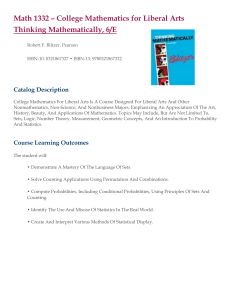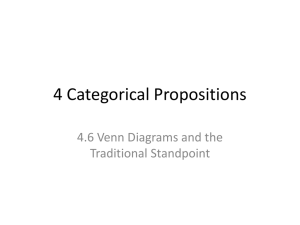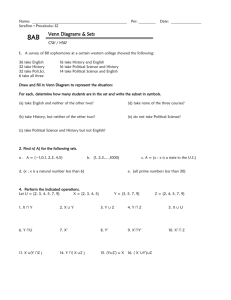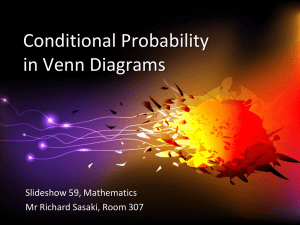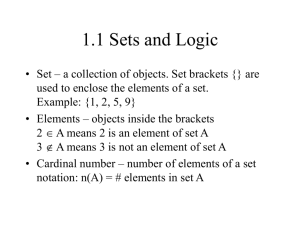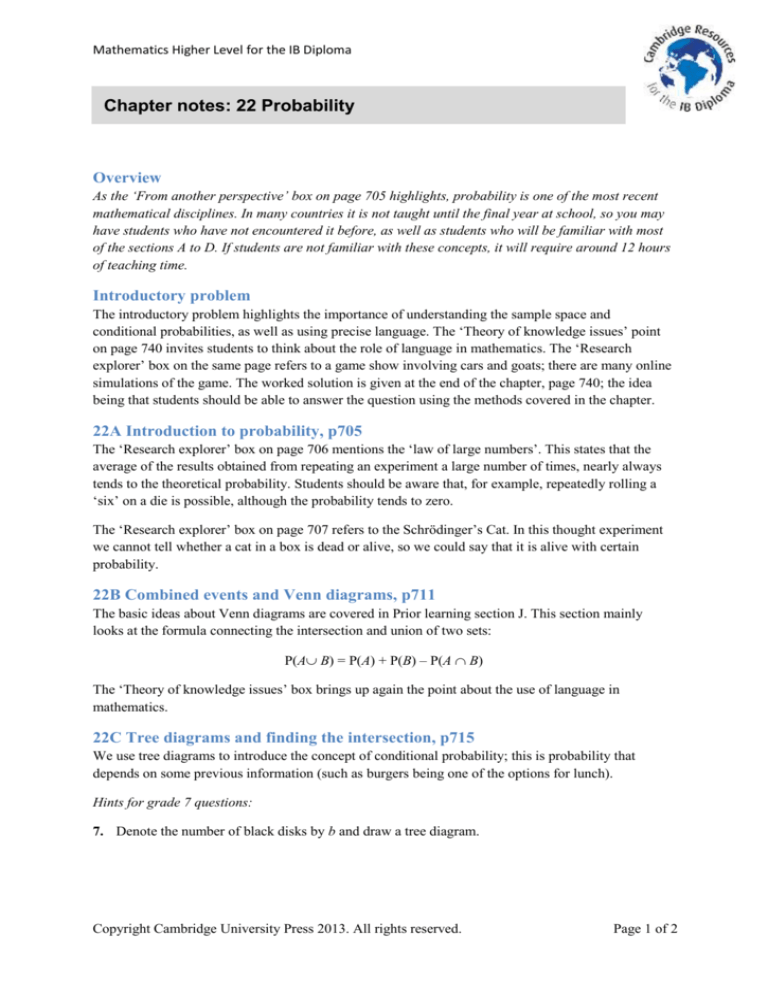
Mathematics Higher Level for the IB Diploma
Chapter notes: 22 Probability
Overview
As the ‘From another perspective’ box on page 705 highlights, probability is one of the most recent
mathematical disciplines. In many countries it is not taught until the final year at school, so you may
have students who have not encountered it before, as well as students who will be familiar with most
of the sections A to D. If students are not familiar with these concepts, it will require around 12 hours
of teaching time.
Introductory problem
The introductory problem highlights the importance of understanding the sample space and
conditional probabilities, as well as using precise language. The ‘Theory of knowledge issues’ point
on page 740 invites students to think about the role of language in mathematics. The ‘Research
explorer’ box on the same page refers to a game show involving cars and goats; there are many online
simulations of the game. The worked solution is given at the end of the chapter, page 740; the idea
being that students should be able to answer the question using the methods covered in the chapter.
22A Introduction to probability, p705
The ‘Research explorer’ box on page 706 mentions the ‘law of large numbers’. This states that the
average of the results obtained from repeating an experiment a large number of times, nearly always
tends to the theoretical probability. Students should be aware that, for example, repeatedly rolling a
‘six’ on a die is possible, although the probability tends to zero.
The ‘Research explorer’ box on page 707 refers to the Schrödinger’s Cat. In this thought experiment
we cannot tell whether a cat in a box is dead or alive, so we could say that it is alive with certain
probability.
22B Combined events and Venn diagrams, p711
The basic ideas about Venn diagrams are covered in Prior learning section J. This section mainly
looks at the formula connecting the intersection and union of two sets:
P(A B) = P(A) + P(B) – P(A B)
The ‘Theory of knowledge issues’ box brings up again the point about the use of language in
mathematics.
22C Tree diagrams and finding the intersection, p715
We use tree diagrams to introduce the concept of conditional probability; this is probability that
depends on some previous information (such as burgers being one of the options for lunch).
Hints for grade 7 questions:
7. Denote the number of black disks by b and draw a tree diagram.
Copyright Cambridge University Press 2013. All rights reserved.
Page 1 of 2
Mathematics Higher Level for the IB Diploma
22D Independent events, p720
We define independent events as those having P(A|B) = P(A). This corresponds to the intuitive
notion of independence. The formula P(A B) = P(A)P(B) can then be derived using the definition of
conditional probability.
Many textbooks quote the latter formula as the definition of independent events. The ‘Theory of
knowledge issues’ box asks students to consider the difference between a definition and a property.
The distinction is not always clear; we can have several equivalent definitions. The answer to the last
question in the ‘Theory of knowledge issues’ box is ‘No’: there are shapes other than circles that have
constant width, one example being the British 50 pence coin.
22E Counting principles in probability, p722
This section is a good opportunity to revise chapter 1.
Hints for grade 7 questions:
6. (b) Arrange the backs and substitutes, then fit the forwards into the ‘gaps’.
22F Conditional probability, p724
This section continues the discussion of conditional probability from section 22C.
Hints for grade 7 questions:
5. Label P(A B) = x and draw a Venn diagram.
22G Further Venn diagrams, p727
This section extends the work on Venn diagrams to include more than two sets.
The ‘Theory of knowledge issues’ box invites students to think about relative merits of using
formulae and diagrammatic representations. Many people worry that visual arguments are not valid in
mathematics, but this is not necessarily the case.
22H Bayes’ theorem, p732
Bayes’ theorem, with more than two events, is a new addition to the syllabus. The disease example
may be a good one to use to introduce this chapter to students who have studied a lot of probability
before.
The two ‘Theory of knowledge issues’ boxes (pages 733 and 735) encourage students to think about
the function of proof in mathematics. The common perception is that its only purpose is to establish
truth. However, the second box suggests that it can also be used to enhance understanding.
Hints for grade 7 questions:
11. Using a Venn diagram (with P(A B) labelled x) or a tree diagram (with P(A) = x) is easier than
trying to use the conditional probability formula.
12. This is the same as the blood test example in the main text.
13. You are looking for P(fair|heads). You can use the Bayes’ formula, but a tree diagram is probably
easier.
Copyright Cambridge University Press 2013. All rights reserved.
Page 2 of 2


